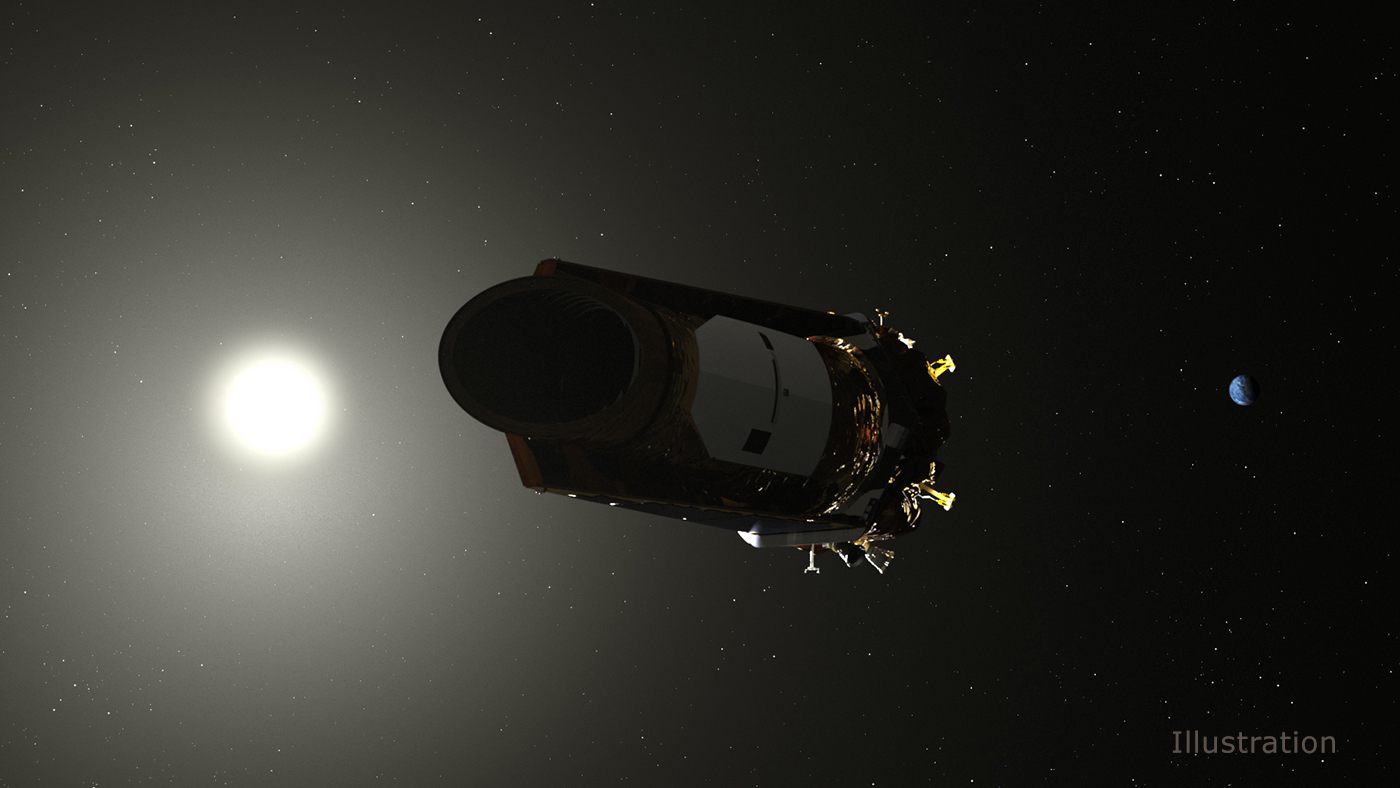Discoveries and More
After nine years in deep space collecting data that revealed our night sky to be filled with billions of hidden planets – more planets even than stars – NASA’s Kepler space telescope was retired. Kepler leaves a legacy of more than 2,600 planet discoveries from outside our solar system, many of which could be promising places for life.
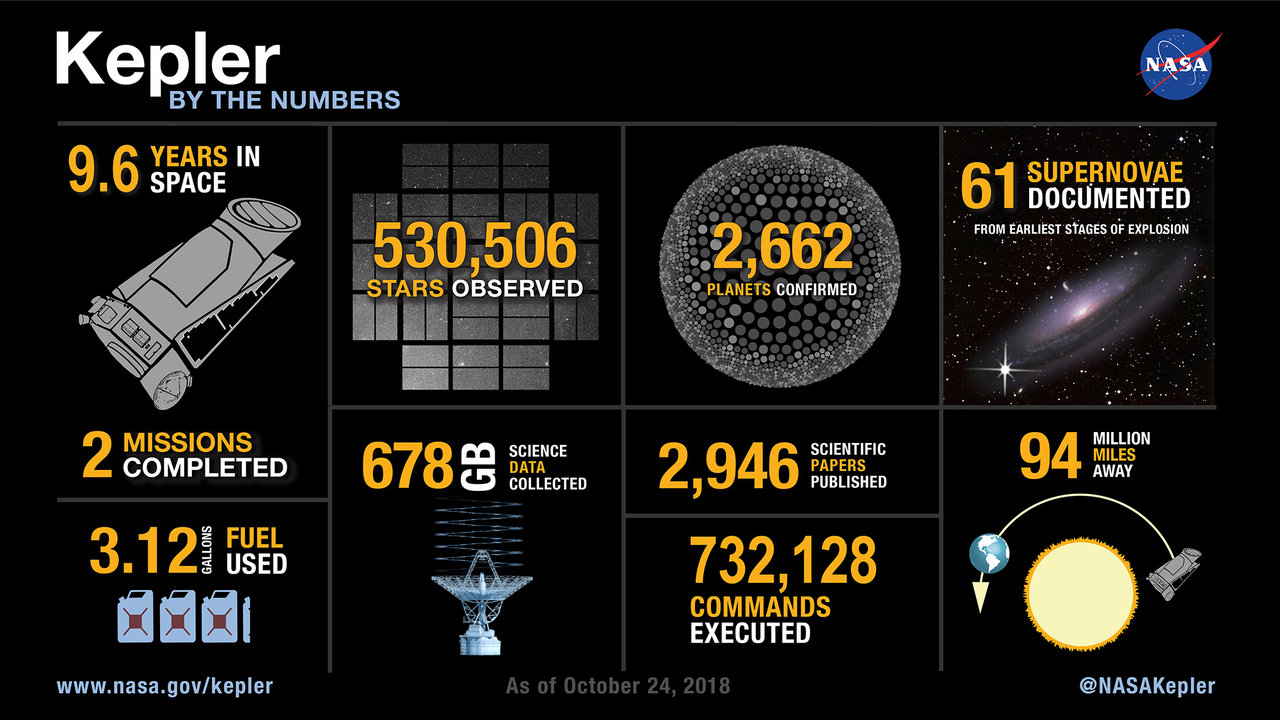
The Top Science Results from the Kepler Mission
NASA's Kepler mission revolutionized our scientific understanding of our place in the cosmos by discovering that:
- Planets outnumber the stars. Kepler has proven there are more planets than stars in our galaxy — and knowing that revolutionizes our scientific understanding of our place in the cosmos.
- Small planets are common. Kepler has shown us our galaxy is teeming with terrestrial-size worlds; the most recent analysis of Kepler’s discoveries concludes that 20-50% of the stars in the sky are likely to have small, possibly rocky planets similar in size to Earth within the habitable zone of their parent stars, where water could pool on the planet surface. We still have much to learn about whether any of them could host life.
- Planets are diverse. Kepler has discovered a diversity of planet types, opening our eyes to new possibilities. The most common size of planet Kepler found doesn’t exist in our solar system — a world between the size of Earth and Neptune — and we have much to learn about these planets.
- Solar systems are diverse too! While our own inner solar system has four planets, Kepler found systems with considerably more planets — up to eight — orbiting close to their parent stars. The existence of these compact systems raises questions about how solar systems form: Are these planets “born” close to their parent star, or do they form farther out and migrate in?
- New insights revealed about stars. Besides launching us into the golden age of exoplanets, Kepler has reinvigorated the study of stars. Kepler observed more than a half million stars over the course of its nine years in operation.
Mission timeline
A interactive timeline of the Kepler mission, starting with its roadmap for planet hunting
View the Kepler timeline
Meet the team
Meet the scientists, engineers and experts who worked with NASA’s Kepler space telescope mission. They helped download and analyze data from the historic spacecraft, leading to the discovery of thousands of planets around other stars.
They Flew Kepler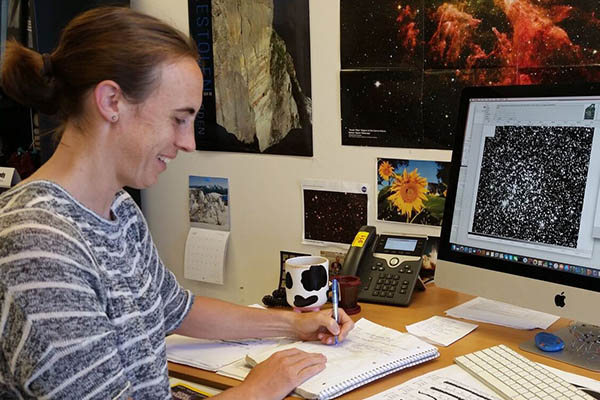
Related videos

Kepler End of Flight Documentary
Launched in March 2009, NASA’s first planet-hunter confirmed more than 2,600 planets beyond our solar system. "Many stars have planets. A lot of these planets are Earth-sized. That's Kepler's legacy. This new knowledge that we have about planets around other stars."
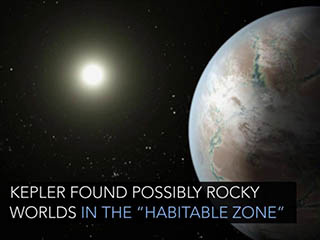
Kepler's Science Results
NASA's Kepler mission revealed that there are more planets than stars in our galaxy. It opened our eyes to diverse worlds – some entirely unlike planets found in our solar system.
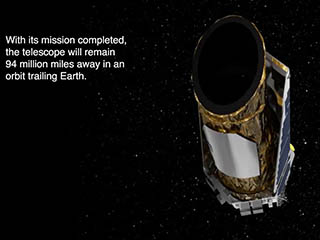
Kepler's Final Orbits
The Kepler space telescope will remain for decades in orbit around the Sun, weaving in and out of Earth’s orbital path.

Next Steps in the Search for Life
NASA Associate Administrator Thomas Zurbuchen and TESS Project Scientist Padi Boyd discuss Kepler's legacy, the search for life and the big question: Are we alone?

Animation: Kepler Passes the Torch to TESS
The stars TESS studies are 30 to 100 times brighter than those the Kepler mission and K2 follow-up surveyed, enabling far easier follow-up observations with both ground-based and space-based telescopes. TESS will also cover a sky area 400 times larger than that monitored by Kepler.
Kepler discovery in 360 VR
Kepler / K2
The Kepler space telescope was NASA’s first planet-hunting mission, assigned to search a portion of the Milky Way galaxy for Earth-sized planets orbiting stars outside our solar system. During nine…
Learn More00
days00
hrs00
mins00
secs

